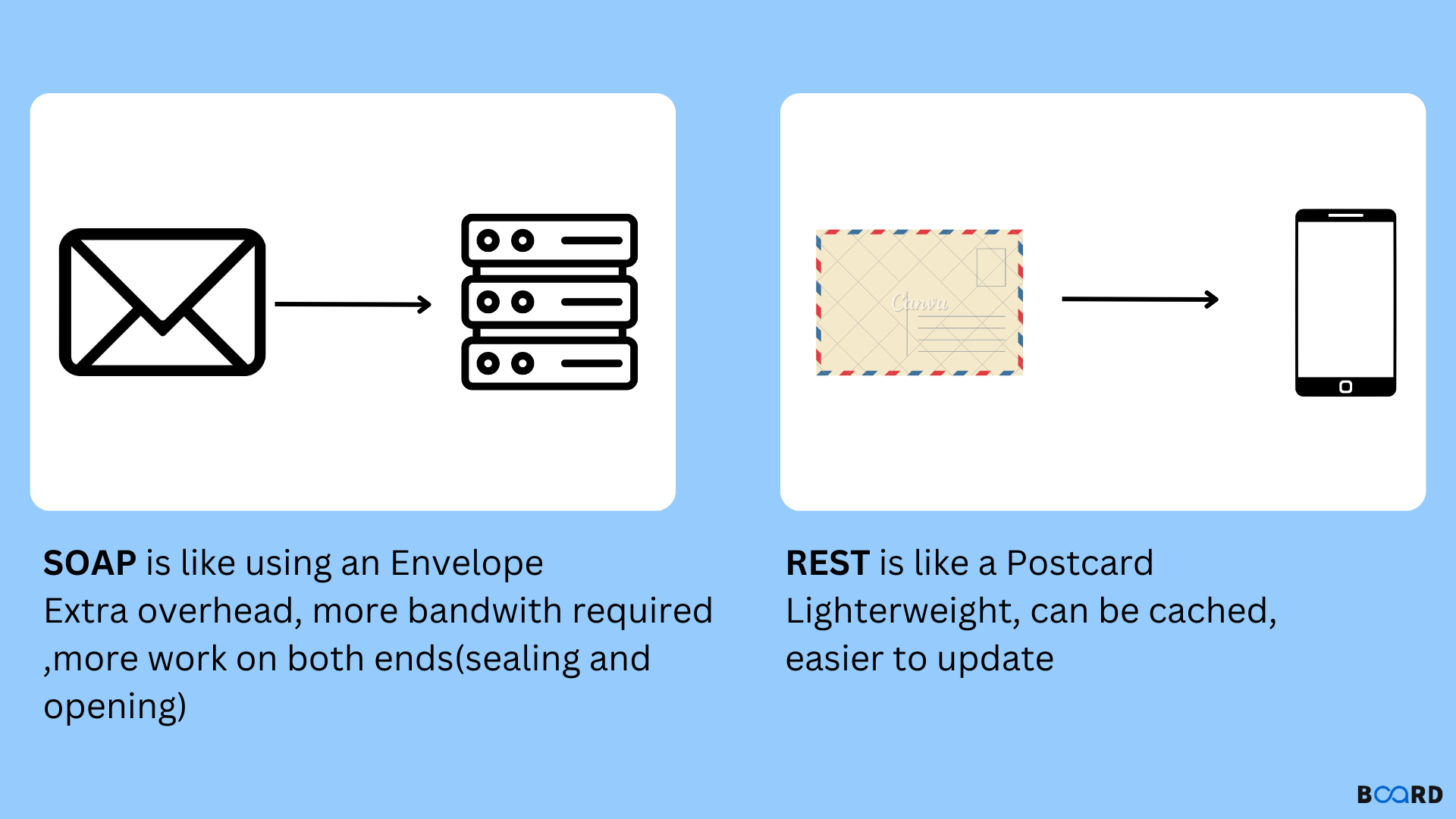Introduction
Have you heard something like SOAP? Do you know what REST is? If not, then don't worry. Board Infinity got you covered.
In this article, we will discuss the difference between SOAP and REST. We will discuss in brief what they are. Online data transmission can be done in two different ways: SOAP and REST. Both specify how to construct application programming interfaces (APIs), which enable data communication between web applications. The World Wide Web Consortium (W3C) maintains the simple object access protocol (SOAP) as an official protocol. Architectural guidelines called REST are known as representational state transfer. Let us understand what SOAP is.
SOAP: What is It?
The original purpose of the standard protocol known as SOAP was to enable communication across applications created in various programming languages and on various platforms. Being a protocol, it enforces constraints that add to its complexity and overhead, which might result in slower page loads.
However, because of the built-in compliances provided by these standards, it may be preferred in business circumstances. Security, atomicity, consistency, isolation, and durability (ACID) are among the built-in compliance standards for guaranteeing dependable database transactions.
Any application layer protocol, including HTTP (for web browsers), SMTP (for email), TCP, and others, can be used to process data requests sent to a SOAP API. Once a request is made, however, SOAP messages must be returned as XML documents, a markup language that is understandable by both humans and machines. A completed SOAP API request cannot be accessed later without sending a new request to the API because a browser cannot cache completed SOAP API requests.
Let us understand what REST is.
REST: What is It?
Adapted to the requirements of mobile applications and lightweight web services, REST is a set of architectural principles. It is a set of guidelines, so it is up to developers to decide how to put these suggestions into practice.
A REST API typically receives requests for data via the HTTP hypertext transfer protocol. Once a request is received, RESTful APIs and RESTful web services (also known as RESTful APIs and RESTful web services) can return messages in HTML, XML, plain text, and JSON. Because it can be read by any programming language (despite its name), is machine- and human-readable, and is lightweight, JSON (JavaScript object notation) is preferred as a message format.
Let us discuss the difference between SOAP and REST.
Difference Between SOAP and REST
Here are the differences mentioned below:
Conclusion
In this article, we have discussed the difference between SOAP and REST. We have discussed what they are and how they play a crucial role. In contrast to REST, which is an architectural style and doesn't adhere to any strict standards, SOAP adheres to six constraints that Roy Fielding established in 2000. Since SOAP is a protocol, it follows a strict standard to enable communication between the client and the server. These restrictions include a uniform interface, client-server architecture, statelessness, caching, layered systems, and code-on-demand.

